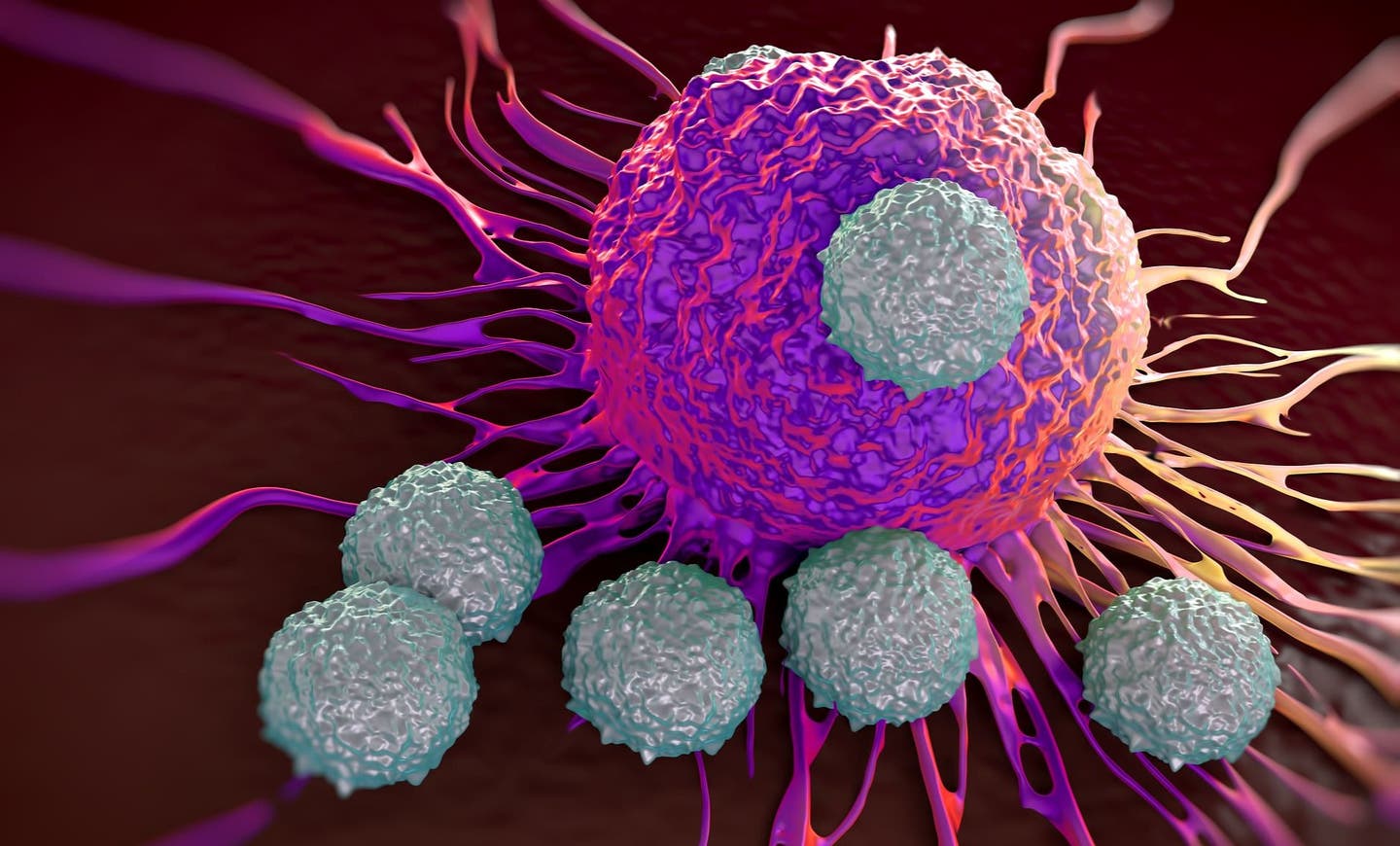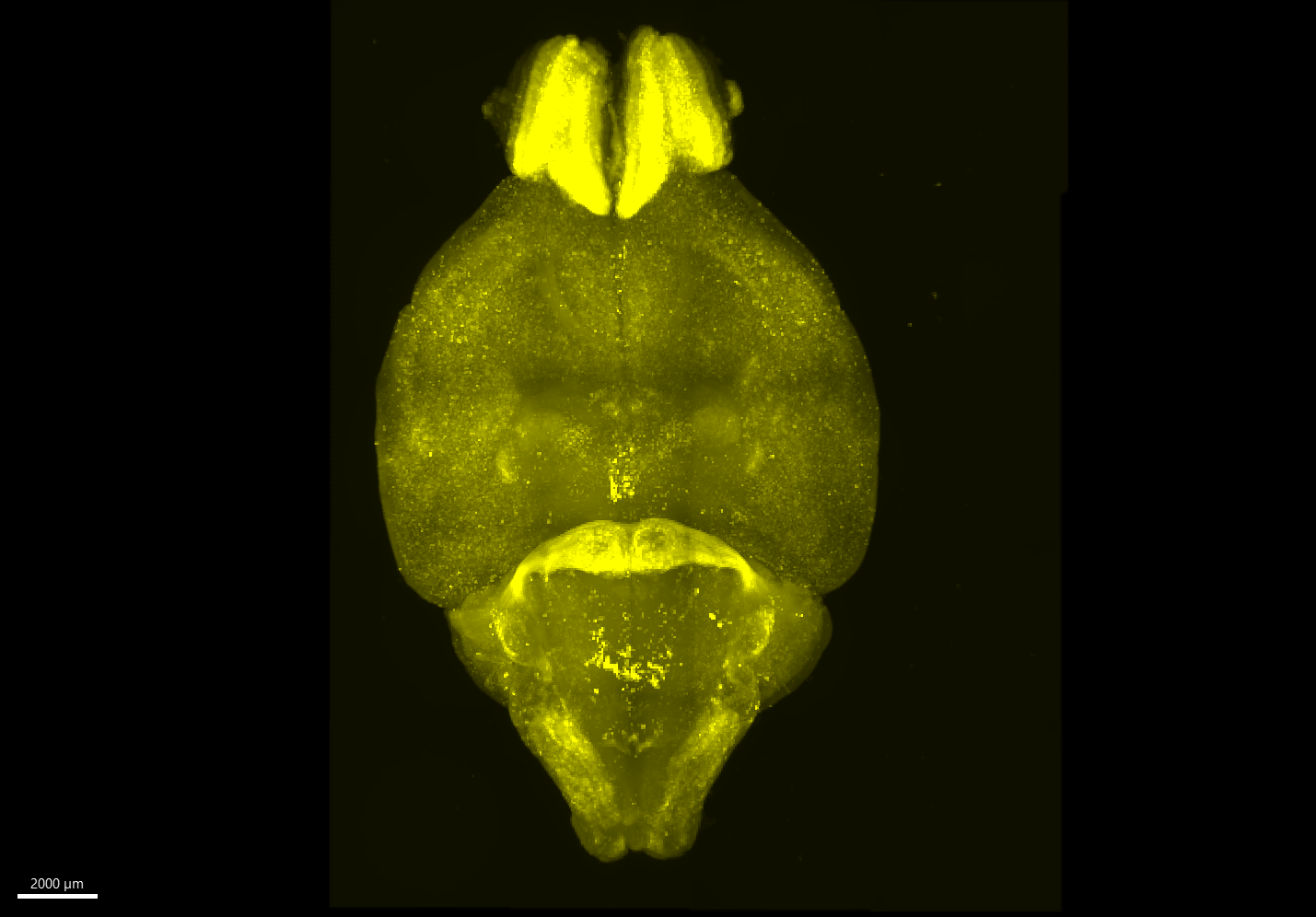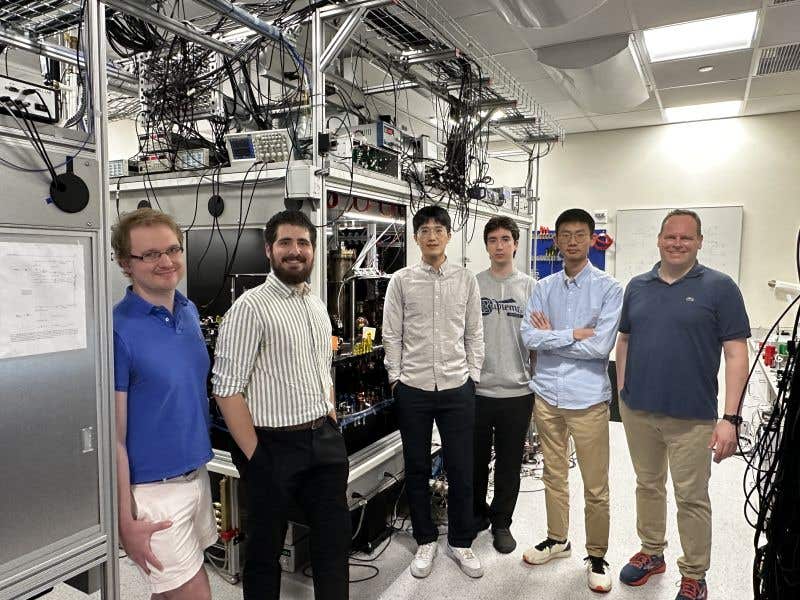Stanford scientists develop synthetic molecule that kills cancerous tumors
Activating the immune system at the site of a tumor can recruit and stimulate immune cells to destroy tumor cells.

[Aug. 30, 2023: Krista Conger, Stanford Medicine]
Activating the immune system at the site of a tumor can recruit and stimulate immune cells to destroy tumor cells. (CREDIT: Creative Commons)
Activating the immune system at the site of a tumor can recruit and stimulate immune cells to destroy tumor cells. One strategy involves injecting immune-stimulating molecules directly into the tumor, but this method can be challenging for cancers that are not easily accessible.
Now, Stanford researchers have developed a new synthetic molecule that combines a tumor-targeting agent with another molecule that triggers immune activation. This tumor-targeted immunotherapy can be administered intravenously and makes its way to one or multiple tumor sites in the body, where it recruits immune cells to fight the cancer.
Three doses of this new immunotherapy prolonged the survival of six of nine laboratory mice with an aggressive triple negative breast cancer. Of the six, three appeared cured of their cancer over the duration of the monthslong study. A single dose of this molecule induced complete tumor regression in five of 10 mice. The synthetic molecule showed similar results in a mouse model of pancreatic cancer.
“We essentially cured some animals with just a few injections,” said Jennifer Cochran, PhD, the Shriram Chair of the Department of Bioengineering. “It was pretty astonishing. When we looked within the tumors, we saw they went from a highly immunosuppressive microenvironment to one full of activated B and T cells — similar to what happens when the immune-stimulating molecule is injected directly into the tumor. So, we’re achieving intra-tumoral injection results but with an IV delivery.”
Related Stories
A paper describing the study will be published online in Cell Chemical Biology. Cochran shares senior authorship with Carolyn Bertozzi, PhD, the Baker Family Director of Stanford ChEM-H, Anne T. and Robert M. Bass Professor in the School of Humanities and Sciences and professor of chemistry; and Ronald Levy, MD, the Robert K. and Helen K. Summy Professor in the School of Medicine. The lead authors are graduate student Caitlyn Miller and instructor of medicine Idit Sagiv-Barfi, PhD.
Building on previous research
The treatment builds upon a previous study co-authored by Levy and Sagiv-Barfi in which the same immune-activating agent and a different one were injected directly into the tumor site. That study showed that the combination could eradicate tumors in mice as well as distant metastases. It also blocked the development of tumors in mice genetically engineered to spontaneously develop mammary tumors. That finding launched an ongoing clinical trial in people with non-Hodgkin lymphoma.
“The surprising result of the new research was that the sculpting of the tumor microenvironment by this intravenously administered molecule was identical to that achieved by injecting immune stimulating agents directly into the tumor,” Levy said. “This is a big advantage because it’s no longer necessary to have an easily or safely injectable tumor site.”
Much more research is needed to determine whether and when the molecule, called PIP-CpG, will be ready for testing in humans. But because the tumor-targeting portion of the molecule — PIP — recognizes certain proteins called integrins found at high levels on the surface of many types of cancer cells, the research suggests the future possibility of an off-the-shelf treatment for patients with a variety of cancers.
“PIP is a really versatile tumor-targeting agent because it can localize to so many different types of tumors,” Miller said. “Also, the same molecule is biologically active in mice, nonhuman primates and humans.”
With professor emeritus of developmental biology Matthew Scott, PhD, and the late professor and chair of radiology Sanjiv “Sam” Gambhir, MD, PhD, Cochran has studied the ability of PIP, which was created in Cochran’s laboratory, to seek out and bind to integrins on the surface of cancer cells. Coupling these molecules to probes that can be visualized via near-infrared imaging or positron emission tomography allows researchers to track the location of hard-to-see cancers in the body.
In other work in the Cochran lab, researchers, in collaboration with the Stanford ChEM-H Medicinal Chemistry Knowledge Center, have generated conjugates that seek out cancer cells and deliver a payload of chemotherapy poisons to the tumor.
Ronald Levy (left) and Idit Sagiv-Barfi led the work on a possible cancer treatment that involves injecting two immune-stimulating agents directly into solid tumors. (CREDIT: Steve Fisch)
“These integrin-targeting molecules act like guided missiles,” Cochran said. “They can deliver toxic drugs or imaging agents. Now we’re using them to deliver a signal that riles up the immune cells to fight the tumor.” That signal, CpG, mimics a pattern of DNA common in bacteria and viruses but rarely found in vertebrates.
Certain types of tumors, including some breast cancers, exploit natural regulatory pathways to tamp down the activity of cancer-killing immune cells that have infiltrated the tumor — rendering them immunologically “cold”.
Miller and Sagiv-Barfi found that the PIP-CpG treatment turned those breast cancer tumors in the mice into “hot” tumors teeming with activated T and B cells. The treatment also reduced the prevalence in the tumor of another type of immune-suppressing cell called a myeloid-derived suppressor cell.
The researchers also showed that the treatment can also target multiple tumors in an animal.
“After more than 10 years of work on PIP, it is rewarding to experience this convergence of expertise from laboratories around Stanford, which allowed us to develop a highly promising new cancer treatment strategy,” Cochran said.
The researchers are now studying the treatment in other types of cancer, and in combination with other immunotherapies.
Other Stanford authors of the study are instructor Patrick Neuhofer, PhD; senior research scientist Debra Czerwinski; and professor of biochemistry Steven Artandi, MD, PhD.
Note: Materials provided above by Stanford Medicine. Content may be edited for style and length.
Like these kind of feel good stories? Get the Brighter Side of News' newsletter.



